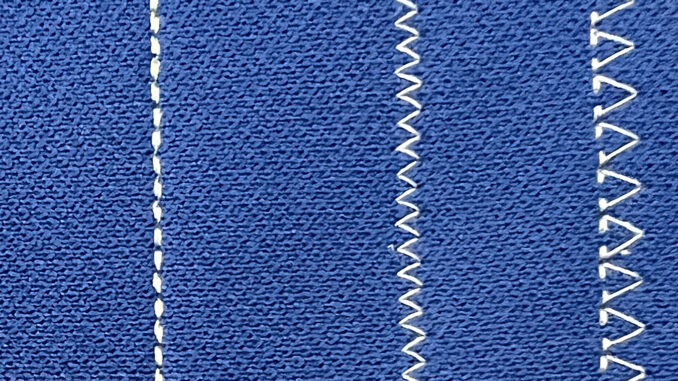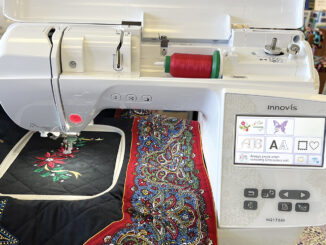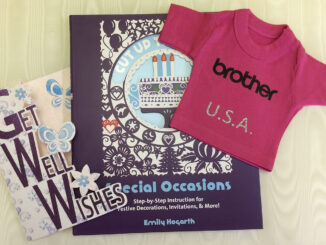
Knit fabrics are a very popular choice today for garments. They are easy to care for and easy to wear! Sewing on knits can be easy as well, with a few tips.
Knit fabrics are varied and include single knits such as T-shirts, double knits, fleece knit, tricot, jersey and interlock. Knits can have different types of stretch, two-way (stretches side-to-side OR up and down) or four-way, stretches in all directions such as spandex. Fiber content can also vary from 100% cotton knit to 100% man-made fiber such as polyester or spandex.
The following tips can help you successfully sew on your knit project of choice.
1. Prewash your fabrics. Prewashing is a good idea no matter what you are making. Wash the fabrics the way you to plan to once the project is finished. If the knit shrinks or loses color, it’s best to discover that before beginning the garment!
2. Choose the right stitch. Most modern sewing machines will have a selection of stretch stitches (check your machine manual) that will keep the seams from puckering or breaking. Another option is to use a serger for your seams. The serger seam will provide some give as well as trimming and finishing the edge of the seam. Knits don’t ravel but the seam allowance can “curl” and a serger can prevent that. A coverstitch machine can also be used to give a professional hem finish to your garments.
3. Use the correct presser foot. Often, the walking foot is helpful for stitching knits. This will keep the top and bottom layers moving through the machine at the same rate. Also, check your machine manual, as some machines will have special feet to use with stretch stitches.
4. Use the correct needle. No matter the machine, make sure you are using the correct needle. For knits, ball point or stretch needles are needed. Ballpoint needles are rounded at the needle point to allow them to separate and slide through the knit loops rather than cutting them. The stretch needles are designed for the four-way fabrics such as spandex. Twin needles can also be used on knits to make the double-stitched hem often seen on garments.
5. Use a good quality thread. For most knit sewing, all polyester thread works the best. It will have a bit more “give” than an all-cotton one. Wooly nylon is another good choice if using a serger; it’s a very stretchy thread, used for the very stretchy knits.
6. Select appropriate pattern. Check your garment pattern to make sure that a knit is an appropriate choice for the garment. Suggested fabrics are usually listed on the pattern back. If your pattern is a “knits only,” make sure you have the right knit. Some patterns may suggest an amount of stretch that your fabric will need in order for the garment to fit correctly.
7. Other helpful notions: Ballpoint straight pins can be helpful to use when pinning your knits for either pattern cutting or stitching; sewing clips also work well in holding seams together. If you need to stabilize part of your garment (buttonholes, neckline, etc.) choose a knit interfacing that will mimic the hand of the knit and provide stability without making the garment stiff. A fusible knit tricot interfacing such as French Fuse will work well.
8. Take care when handling the fabric! Knits stretch so be vigilant as you are stitching and do not stretch the fabric as you are feeding through the machine or serger!
9. Test sew! This is one step many of us prefer to skip but can save you a lot of headaches! Test your stitches, needle and thread to make sure you are getting a quality, secure stitch. If you have skipped stitches or uneven tension, make adjustments (consult your machine manual).
Knit garments are a staple for many of our wardrobes… from T-shirts to sweatshirts to leggings. Understanding the fabrics and the tools needed for successful stitching will help you complete a project that you are proud to wear!
-submitted by The Sewing & Vacuum Center





